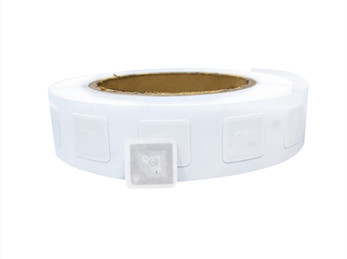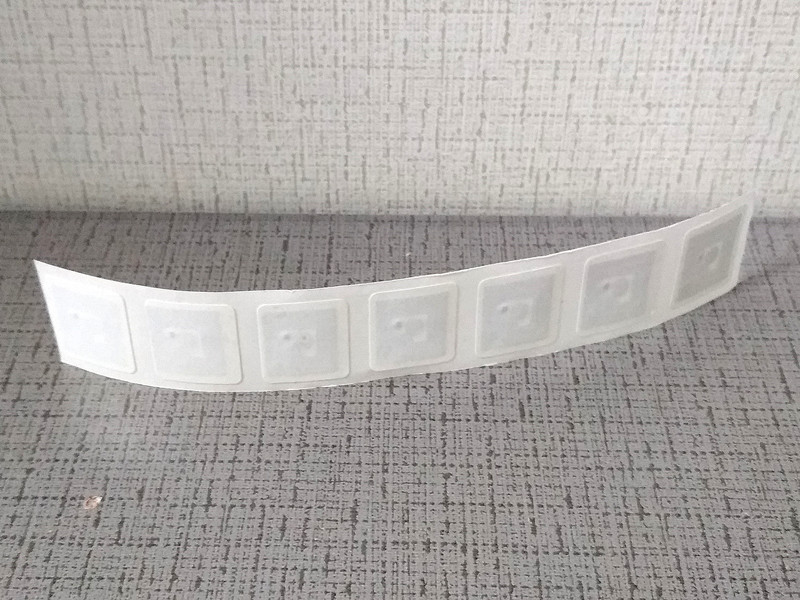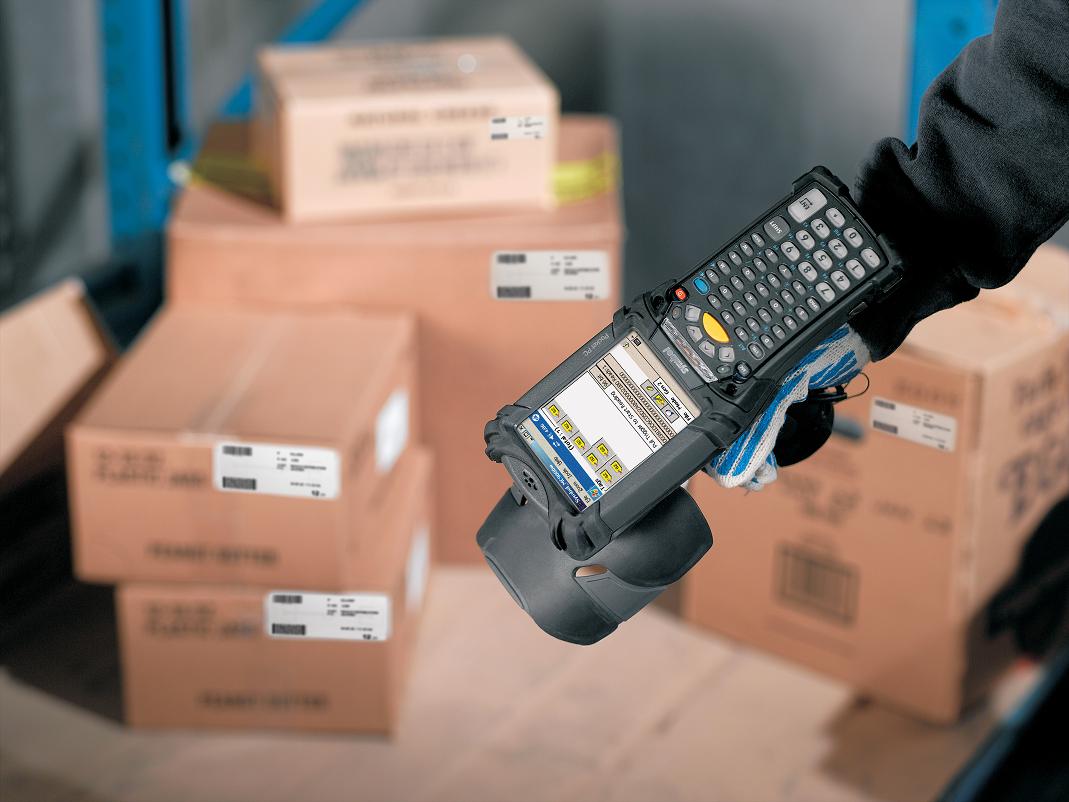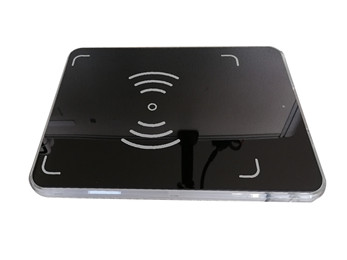Catalogues
- NFC Tags
- Paper NFC tagsOn Metal NFC tagsTamper proof nfc tagsFPC NFC tagsSpecial NFC tags
- NFC Cards
- Plastic NFC cardsPaper NFC cardsLF RFID cardCPU / JAVA card
- NFC Key fobs
- Epoxy NFC key tagsPlastic NFC key fobs
- NFC Reader writer
- Fixed NFC reader writerHandheld RFID readerUSB token NFC readerLF RFID Reader
- NFC Wristband
- Reusable NFC wristbandsOne-off NFC wristbands
- RFID inlay
- Sheet type RFID inlayRoll type RFID inlay
- RFID Tag
- RFID Laundry TagRFID Asset TagRFID Pallet Tag
- Smart Device
- RFID Smart CabinetRFID Library DeviceRFID TunnelRFID Retail Device
- RFID Security Gate
- RFID gate
- Library RFID Tags
- RFID Book TagRFID Disc Tag
- UHF Tags
- EPC Gen 2 UHF tagJewelry RFID tagTamper Proof UHF tagRFID Windshield TagCable Tie RFID TagRFID garment tagRFID Clothing Hard TagDual frequency RFID tagRFID Medical TagLED UHF TagARC Certified UHF Tag
- UHF Cards
- UHF Smart Card
- UHF Wristband
- RFID Wristbands
- UHF Reader writer
- Fixed UHF ReaderMobile RFID ReaderR2000 UHF readerE Series UHF readerC Series UHF reader
- UHF Antenna
- UHF RFID Antenna
- On metal RFID Tag
- UHF Metal tagCeramic UHF metal tagFlexible UHF Metal TagPCB UHF Metal Tag
- Animal Tag
- RFID ear tagRFID Animal ReaderInjectable RFID tagRFID foot ring tag
- More Recommend
- RFID asset tagRFID screw tagRFID Seal Tag

GEE-NT-1515 18 x18 mm NFC tag
18 mm x 18 mm, Chrome/ thermal paper or PET, 13.56 Mhz, 4 cm read distance, NXP icode slix, icode slix-2 chip, ISO15693 protocl
Download Specification
OverviewSpecificationApplicationsSupport
GEE-NT-1515 is a mini type 5 NFC tags that worked at frequency of 13.56 Mhz. It integrateds NXP ICODE SLIX, SLIX-2, SLX-L, SLIX-S chips with read distance of 4 cm, fully comply with ISO15693 and ISO18000-3 protocol. Typcial application: asset management, anti-fake

Main features:
• 18x 18 mm, NXP ICODE SLIX, SLIX-2, SLX-L, SLIX-S chip, paper tag / dry inlay / wet inlay
• 4 cm read distance in air
• Etched aluminum antenna, 14.5 x 14.5 mm with excellent RF performance
• CMYK full color printing,
• Advanced RFID tag production machine, Flip chip mounter maximize the stability of RFID tags in different batches
• ISO9001 Quality control system and ROHS material guarantee each product is perfect in quality and totally green for environment
| Physical | |
| Material | Paper/PET |
| Size | 18 x 18mm |
| Thickness | 0.30 mm |
| Antenna | Etched Aluminum, 14.5 x 14.5 mm |
| Printing | CMYK 4c printing |
| Encoding | Supported |
| Packing | 2000 piece/ roll, 8 roll/ ctn, G.W: 8 kg/ ctn |
| Protocol | ISO15693 |
| RF | |
| Operating Frequency | 13.56 MHz |
| Chip | NXP ICODE SLIX, SLIX-2, SLX-L, SLIX-S |
| Memory | 256 - 2528 k bit |
| Read Distance | 4 cm in the air |
| Write endurances | 100,000 cycles |
| Data retention | 10 year |
| Others | |
| Security | UID,Password, AFI protection |
| Extended features | 32-bit EAS and AFI password |
| Environment | |
| Operating Temp | -40 ~ 70 Degree Celsius, 5~ 95% RH, No condensation |
| Storage Condition | -20 ~ 45 degree Celsuis, 5~ 95% RH, no condensation |
| Certificate | ROHS, SGS |

RFID, or Radio-Frequency Identification, is a method of storing data and retrieving it via radio waves. Much in the same way a barcode can store information about a type of product, RFID tags contain unique identifiers that correspond to inventory database records. Switching to RFID in your logistics chain offers some significant advantages over traditional inventory control methods.
WIRELESS SCANNING
One of the major advantages of RFID in logistics is how quickly RFID tags can provide information compared to barcoding or other systems. With a barcode, you have to pass each code over a scanner to register the item. RFID works wirelessly, so you can point a scanner at a box of items and register each one without having to take them out first. A powerful enough RFID scanner could inventory entire rooms at once, making inventory tracking a much faster process.
UNIQUE TRACKING
RFID tags contain a microchip or other storage device that can contain a large amount of information. This allows you to place individual identifiers on products, rather than using a single barcode for an entire class of items, and to follow individual items through your logistics chain, instead of needing to extrapolate that data from inventory numbers. This also allows you to track a defective item back to its source in a much easier manner than with other tracking methods.
REAL-TIME UPDATES
Because scanning and inventory control is much faster with RFID than with other forms of management, the system lends itself to integration with wireless communication systems and real-time inventory management systems. This allows you to query the database at any time and find out exactly how much of a given product you have on hand, instead of getting numbers that may be days or weeks old. RFID scanners built into the entrances of warehouses can even scan crates as they enter and leave, providing instant updates of inventory totals that can propagate to other users across the company network.
INTEGRATION WITH OTHER SYSTEMS
The same RFID tags that provide inventory information can also provide other services as well. Security scanners at building exits can let your system know instantly when any product leaves the premises, allowing you to spot theft or misdirected shipments quickly and correct the problem. Likewise, scanning RFID tags at entry and exit points allows confirmation of shipping and delivery of goods, allowing you to trace a shipment as it moves through your logistics chain, and provide accurate estimates of arrival to customers or other business units.
Related Products
-
GEE-SD-RD202BL ISO15693 rfid pad reader >

410* 300 * 29 mm, PMMA desktop + aluminum enclosure, 13.56 MHz, up to 40 cm read distance, 50 tags/ second inventory speed, ISO15693 and ISO18000-3 protocol

 NFC Tags
NFC Tags NFC Cards
NFC Cards NFC Key fobs
NFC Key fobs NFC Reader writer
NFC Reader writer NFC Wristband
NFC Wristband RFID inlay
RFID inlay RFID Tag
RFID Tag Smart Device
Smart Device RFID Security Gate
RFID Security Gate Library RFID Tags
Library RFID Tags UHF Tags
UHF Tags UHF Cards
UHF Cards UHF Wristband
UHF Wristband UHF Reader writer
UHF Reader writer UHF Antenna
UHF Antenna On metal RFID Tag
On metal RFID Tag Animal Tag
Animal Tag More Recommend
More Recommend Media & Ads
Media & Ads Transportation & Ticketing
Transportation & Ticketing Library & AssetsManagement
Library & AssetsManagement Logistics & Tracking
Logistics & Tracking Access control
Access control Retail & Gas station
Retail & Gas station Texile solution
Texile solution Health & Medicine
Health & Medicine Food & Wine
Food & Wine Apps for NFC mobile
Apps for NFC mobile Apps for Industry & Retail
Apps for Industry & Retail Manuals
Manuals Software
Software FAQ
FAQ Service Center
Service Center How to choose right tags
How to choose right tags Company news
Company news Industry news
Industry news Technical communication
Technical communication


